VANCOUVER — Balmoral Resources (TSX: BAR; US-OTC: BALMF) is gearing up for a busy field season at its 61.7 sq. km Martiniere gold property in Quebec’s portion of the Abitibi greenstone belt.
The company plans to spend $4 million on a 20,000-metre drill program targeting the Bug Lake gold trend — a 1.8 km long, structurally hosted gold system, located 45 km east of Detour Gold’s (TSX: DGC) Detour Lake gold mine.
The program will build upon results from the company’s latest drilling, which has defined mineralization across 375 metres of the trend, starting at less than 100 metres deep.
Results include 44.8 metres of 1.18 grams gold and 43.6 metres of 1.41 grams gold, whereas higher-grade intercepts within the zones returned 7.1 metres of 3.44 grams gold and 8.8 metres of 3.14 grams gold.
“The sheer scale of mineralization really speaks to the strength of the overall system. We’re really pleased with what we’ve seen so far,” Darin Wagner, president and CEO, tells The Northern Miner during a phone interview. “It’s a long structure, so we’re working at it in manageable bites to get it resource ready. It’s basically a drill hole exercise for us right now.”
Wagner envisages that Bug Lake could have a “couple of starter pits on top of a higher-grade, underground operation,” similar to Goldcorp’s (TSX: G; NYSE: GG) Hoyle Pond gold mine in Timmins, Ont.
“If we can deliver a 1.2 km by 500 metre block in the first resource … it’d make for a pretty nice mining scenario,” he says. “There’s still a significant amount of drilling to do … but we should be able to reach that goal by the end of 2017, at the latest.”
And the company is fully funded to see the project to its resource milestone, Wagner says.
Balmoral expects to close a $6-million private placement at the end of June. The placement offers 4.5 million federal flow-through shares at 90¢ per share and 1.7 million Quebec flow-through shares at $1.20 per share.
The cash injection combines with the company’s $7.7 million in existing working capital, and $3.4 million from a pending sale of its Discovery zone gold property in Quebec to Wallbridge Mining (TSX: WM).
Balmoral discovered Bug Lake while exploring the property’s Martiniere West gold trend — a 1.5 km long, arc-shaped zone of shearing and alteration along the contact between a gabbro and a package of sedimentary and volcanic rocks.
The structural zone collides into the Bug Lake trend, where broad, lower-grade mineralization envelopes higher-grade ore shoots along the edges of a north-trending quartz-porphyry dyke.
“It took us a bit to recognize we had two different mineralized trends on the property,” he says. “There’s no outcrop at surface and geochemistry doesn’t always work because it’s really wet, so if you’re exploring all you have is a model and a drill hole. But what’s emerging is a long, extensive gold-bearing structure, and like most deposits in the Abitibi, we expect it to have decent depth extent.”
Wagner says that the Bug Lake and Martiniere West gold trends fall within an east-trending structural corridor defined by the Lac du Doigt fault in the north, and the Sunday Lake and Lower Detour deformation zones in the south.
Many of the region’s major gold deposits fall along these crustal-tapping structures, including Detour’s Detour Lake deposit, which hosts 514.3 million proven and probable tonnes grading 0.99 gram gold for 16.4 million oz. gold.
“The relative movement along the regional faults torqued the rocks in between and broke them open along pre-existing zones of weakness,” he says. “And the space it created gave the gold-bearing fluids an avenue onto our property.”
Bug Lake would be the company’s second resource estimate from a greenfields discovery across its 700 sq. km land holdings within the Abitibi.
In March, the company released the maiden resource for its Grasset nickel-copper-cobalt-platinum group metals deposit, north of the Sunday Lake deformation zone, 10 km east of the Martiniere property.
Wagner says that Balmoral “unintentionally discovered” the magmatic sulphide deposit in 2014 while chasing a drill hole that returned 33 metres of 1.66 grams gold.
“We were drilling widely spaced holes following up on a gold hit and tagged into the nickel,” he says. “It’s testimony to being in the right place at the right time.”
The open-ended resource stands at 3.5 million indicated tonnes of 1.6% nickel, 0.2% copper, 0.03% cobalt, 0.34 gram platinum and 0.84 gram palladium, using 1.8% nickel equivalent cut-off. Inferred resources add 91,000 tonnes of 1.1% nickel, 0.1% copper, 0.02% cobalt, 0.2 gram platinum and 0.48 gram palladium, using 1.19% nickel equivalent cut-off.
“The nickel market is extra soft right now, so we’ve put Grasset on the shelf as a bright little bobble to be plucked off once the nickel space gets back in reasonable shape,” he says. “Bug Lake is the next deposit we’ll get into a resource, so the focus for us has gone there.”
Balmoral has traded within a 52-week range of 33¢ to 90¢ per share, and closed at 78¢ per share at press time. The company has 117.6 million shares outstanding for a $90.6-million market capitalization.

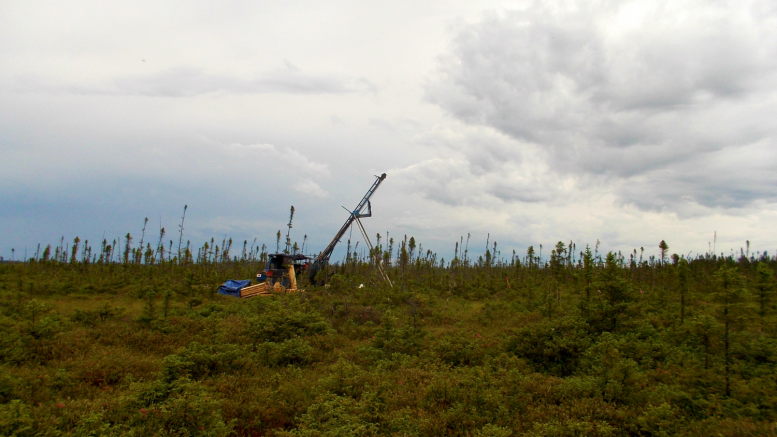
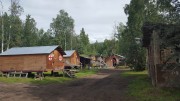
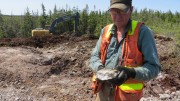
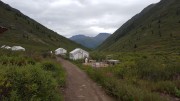
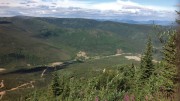
Be the first to comment on "Balmoral takes aim at Bug Lake"